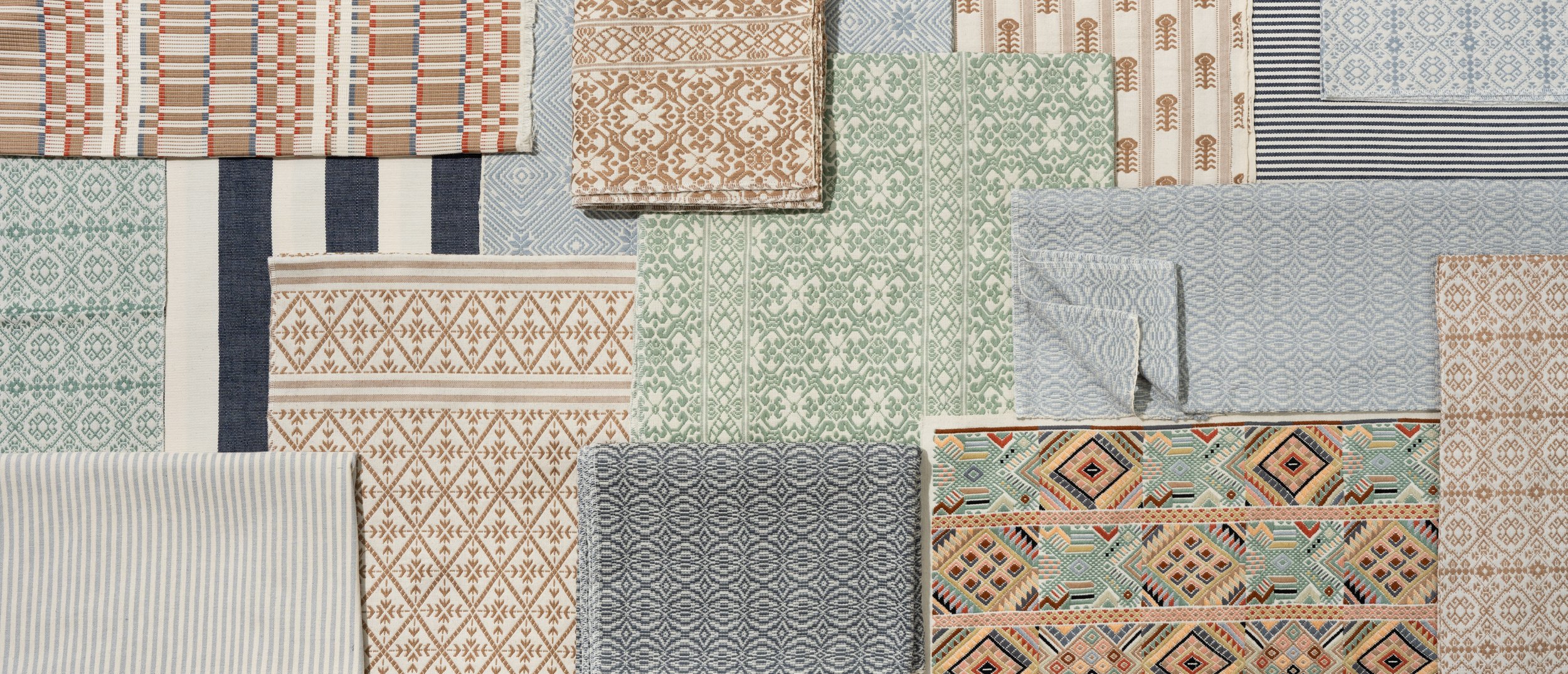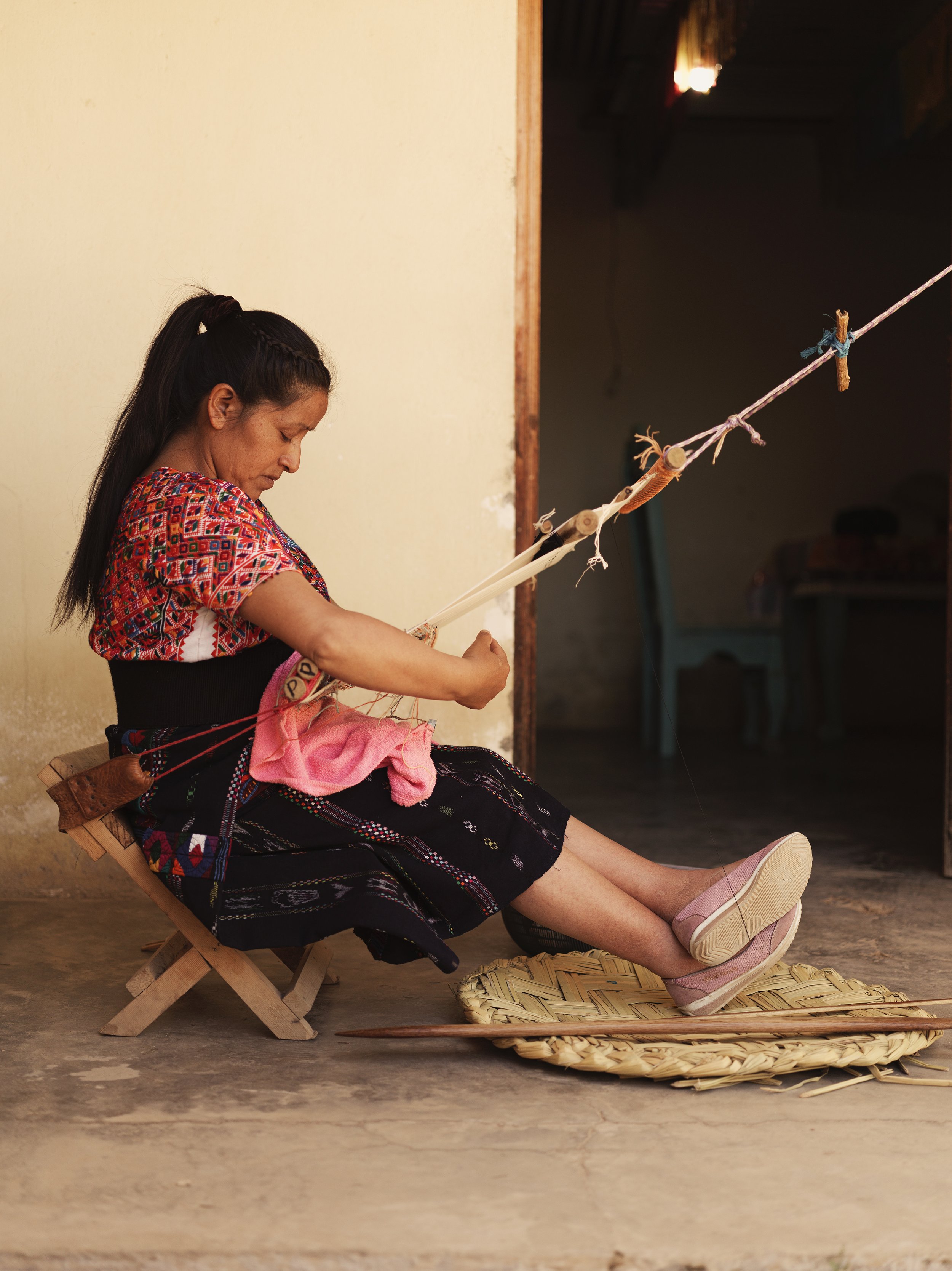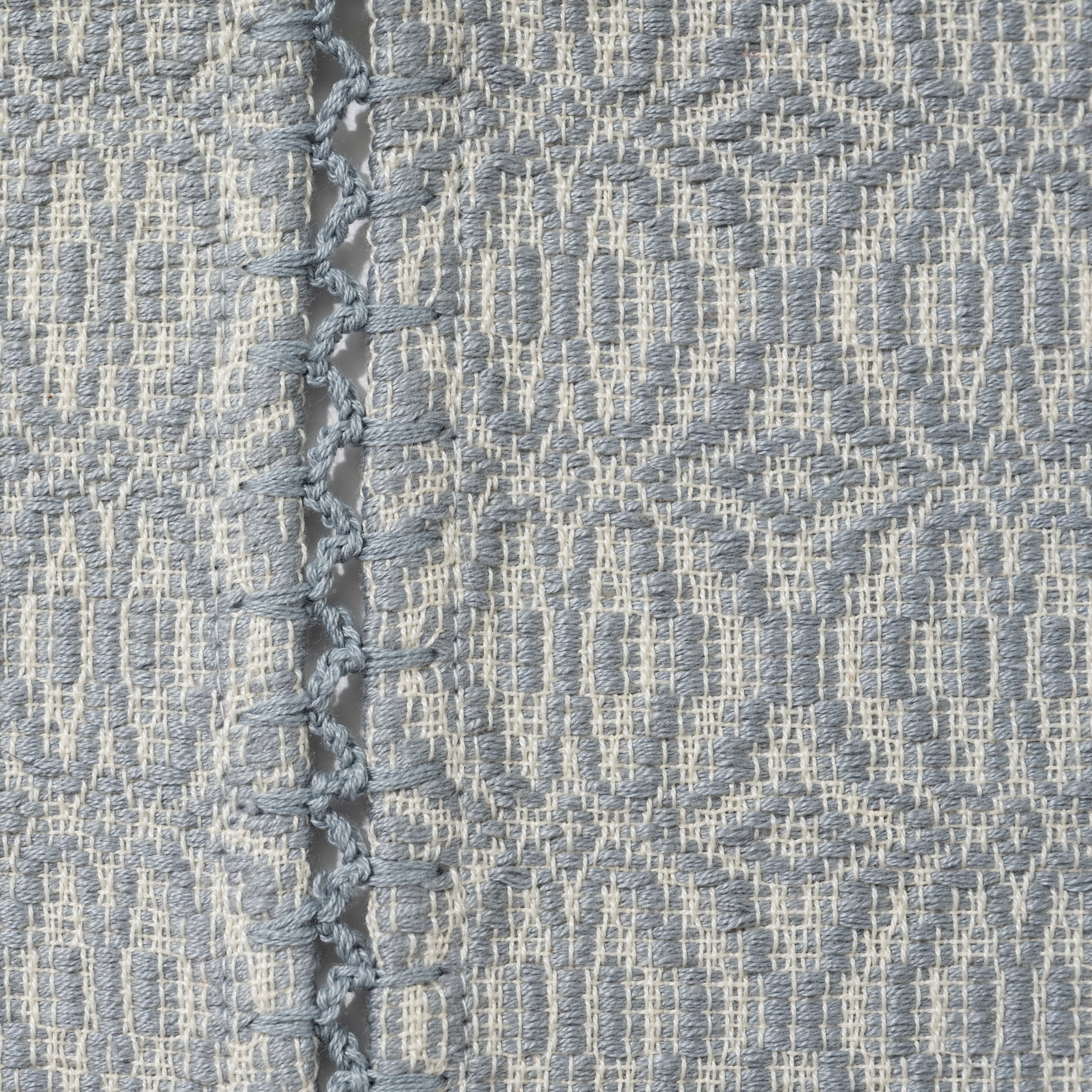Regan’s Story: How a Passion for Textiles Sparked a Mission to Support Woven Legacies
My favorite part of the interior design process has always been layering. I often say you can take two rooms with the exact same neutral sofa, wooden coffee table, and tufted wool rug—and through layering lighting, small goods, and textiles, create two completely different spaces. Especially with textiles.
Various Finished Textile watches from the RB Curated Collection.
Textiles have been a lifelong love of mine—particularly those that are handmade, antique, or carry cultural significance. I love touching them, learning their stories, and admiring the artistry woven into every thread. Over the years, I’ve collected textiles from all over the world, often found buried in fabric stacks in out-of-the-way shops most designers wouldn’t think to visit. At our studio, I created a specialty library filled with textile treasures, allowing us to bring deeply personal, one-of-a-kind style to our clients’ homes.
What draws me to textiles is their soul. I’ve always been captivated by the handcrafted, the storied, and the deeply personal. Textiles are visual storytellers—they reflect who we are. To me, there’s no such thing as too much mixing and matching; the more layers, the more we express our individuality and create familiarity in our homes. When it comes to artisan-made textiles, my passion runs deep, rooted in the belief that true beauty lies in the human touch behind every object.
The journey that would eventually lead to Guatemala began to take shape when my mom and sister returned from helping build homes in the country’s remote highlands. They spoke with reverence about the warmth and resilience of the people they met—communities rich in spirit and tradition. These stories planted a seed. Around that same time, I began noticing a growing presence of artisan-made goods at global design shows—conversations around heritage, authenticity, and slow craft were becoming louder.
This convergence of personal history, passion for textiles, and trend awareness pulled me toward Guatemala. I saw it as one of the great birthplaces of weaving, and I was inspired to dive in and learn everything I could about its textile traditions.
What began as a designer’s curiosity quickly evolved into something much more meaningful.
Regan examining textile weaving on a foot loom in Guatemala
Back Strap Weaver ‘Pascuala’ from The Nawal Ja’ Cooperative of Nahuala, Sololá, Guatemala
In village after village, I saw how weaving was not just a skill but an inheritance—a form of storytelling passed from generation to generation. Each huipil, the traditional handwoven blouse worn by Indigenous women, is rich with symbolism. The patterns, colors, and motifs speak to place, identity, and ancestry. Creating a single huipil can take months of skillful, intricate work. Each thread carries pride, history, and personal expression. Watching these artisans at work was awe-inspiring—their dedication, creativity, and attention to detail were unmatched.
But I also witnessed a troubling reality. In times of need—whether for healthcare or education—women were often forced to sell their cherished huipiles. These heirlooms, meant to tell stories, were being repurposed and sold as fashion items, stripped of their cultural context and the dignity of their makers. As someone who deeply values handmade craftsmanship and creative expression, this exploitation struck a nerve. I began to wonder: was there a way to do better? Could we create a model that honored the weavers, celebrated their artistry, and offered sustainable income?
From a design standpoint, I was immediately drawn to the sophistication and quality of the weaving - on par with the finest textiles I’d sourced for our design projects.
But what stood out most was the cultural weight behind each piece. The language of pattern, color, and technique echoed stories I’d seen across other cultures. These textiles weren’t just beautiful—they were significant. I knew there had to be a different way to work with them: one rooted in respect, fair compensation, and purpose.
Determined to learn more, I trekked through rural Guatemala, immersing myself in the process. I learned how their textiles were dyed, woven, and shaped by tradition. Guided by a spirit of personal determination, I learned to embrace challenges - such as the limitations in width of looms - and turn them into a catalyst for creative solutions and extraordinary details, such as piecing panels together using traditional embroidery and hand-finishing techniques.
A member of The Corazón de Mujeres of Chimaltenango, Guatemala holding up natural hand died yarn.
A detail of the decorative & functional ‘randa stitch’ on the Óvalo Blanket - Azul Claro / Ice Blue
The more I immersed myself, the more I fell in love. With the artistry, yes—but also with Guatemala itself. The untamed beauty of its landscape, the layers of its history, and above all, the people: resilient, kind, and endlessly generous. Everyone I met had a story to share—a connection to craft, to land, to heritage. In Guatemala, nature, history, and culture are woven into the very fabric of community. In a world that often feels fleeting, this sense of rootedness was deeply moving.
With a heart full of inspiration and a notebook full of ideas, my passion had become a purpose. I returned to Antigua determined to bring my vision to life. I began networking, hitting the cobblestones, sharing my story with anyone who would listen, and it wasn’t long before I was introduced to Averie and her team at Casa Flor.
The connection was instant. Averie and I shared a vision: to celebrate and elevate Guatemalan artistry in a way that was ethical, respectful, and collaborative. Together, we began to build what would become the foundation of RB Curated.
There were challenges—many of them. We had to learn about natural dyes, color fastness, and maintaining consistency from batch to batch. We experimented, sometimes failing, often discovering that mistakes led to something even more beautiful than we had imagined. We learned new business practices and tackled logistics: packaging, shipping, quality control, and production in remote areas that lacked modern technology and infrastructure. Always, we came back to the people. To their stories. To their dreams. To the reason we started.
Because behind every textile is a legacy.
Guatemala is a country of complexity, and also of extraordinary spirit—communities that fiercely protect their culture, artisans who pour history into their work, and families who lift each other up. RB Curated was built to honor that spirit.
Regan and Averie visiting one of the artisan communities
Today, we partner directly with artisans across Latin America, fostering long-term, equitable relationships that preserve cultural heritage while creating meaningful economic opportunity. Our collections allow designers and homeowners to bring pieces of living legacy into their spaces—pieces with soul, craftsmanship, and deep cultural roots.
Regan Billingsley, founder of RB Curated
For me, this work isn’t just about design. It’s about connection. Belonging. Creating something that transcends trend. Every fiber tells a story, and we are honored to share those stories—and to invite others to be part of a mission that supports legacy in its truest form.















